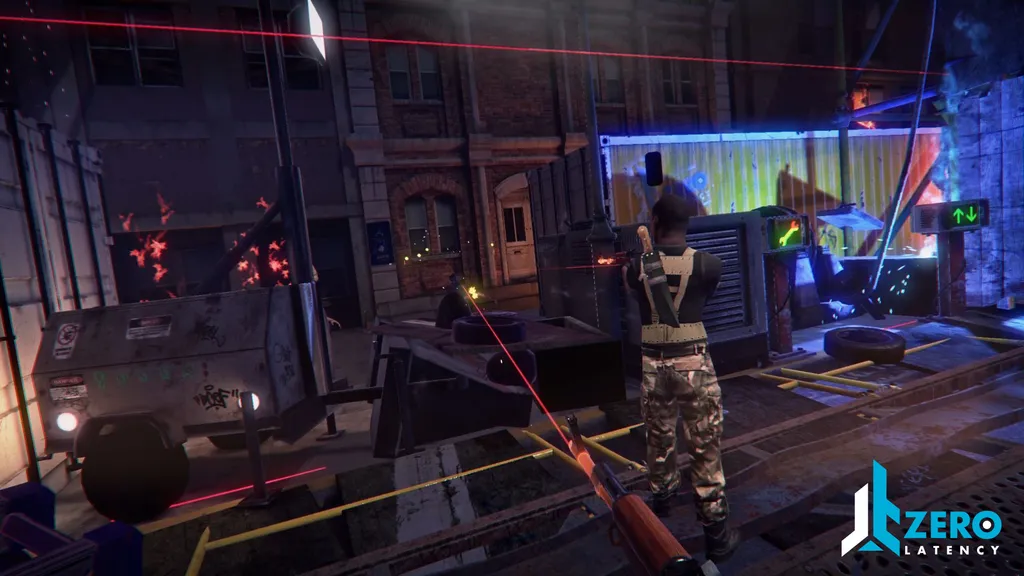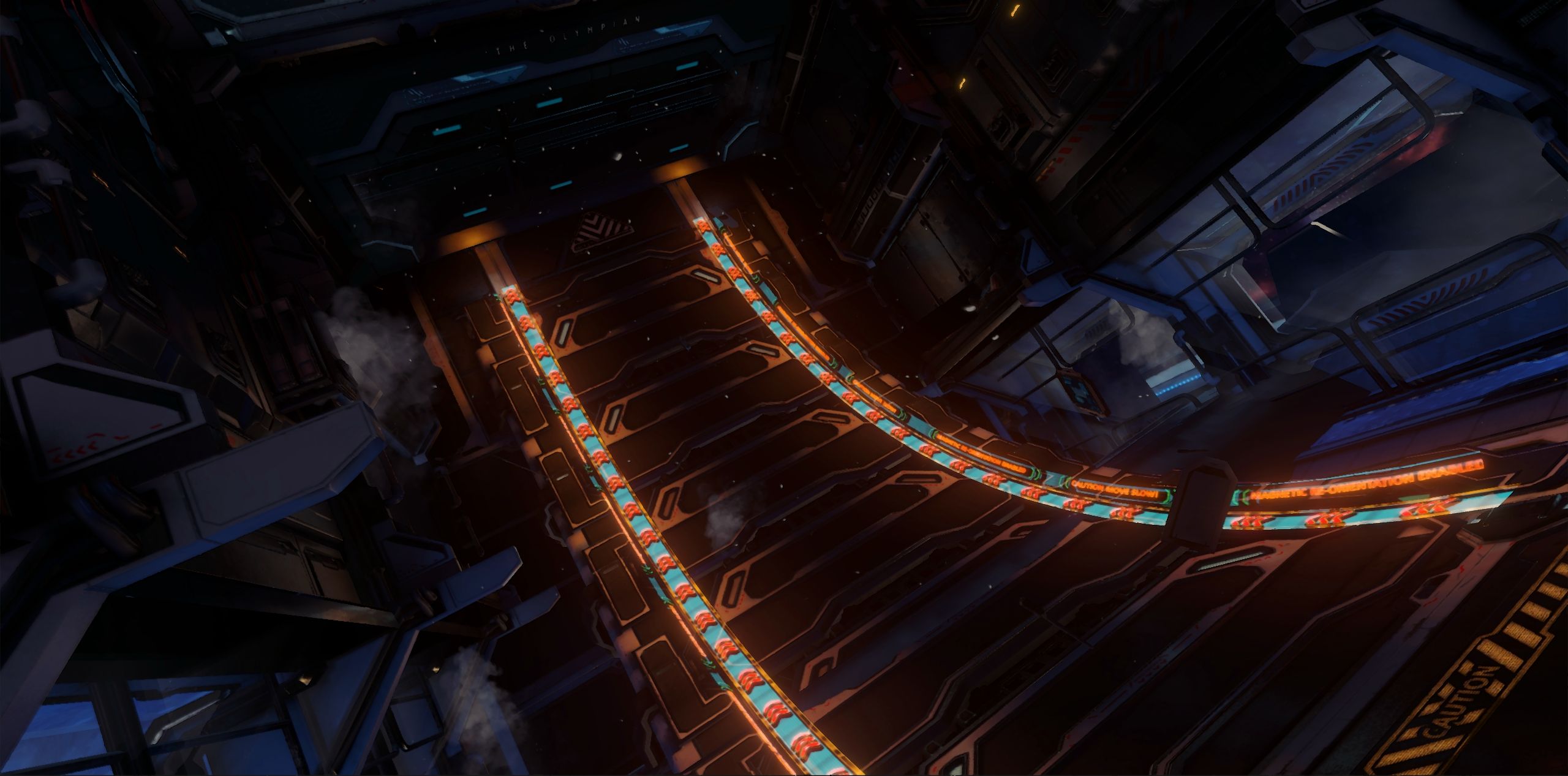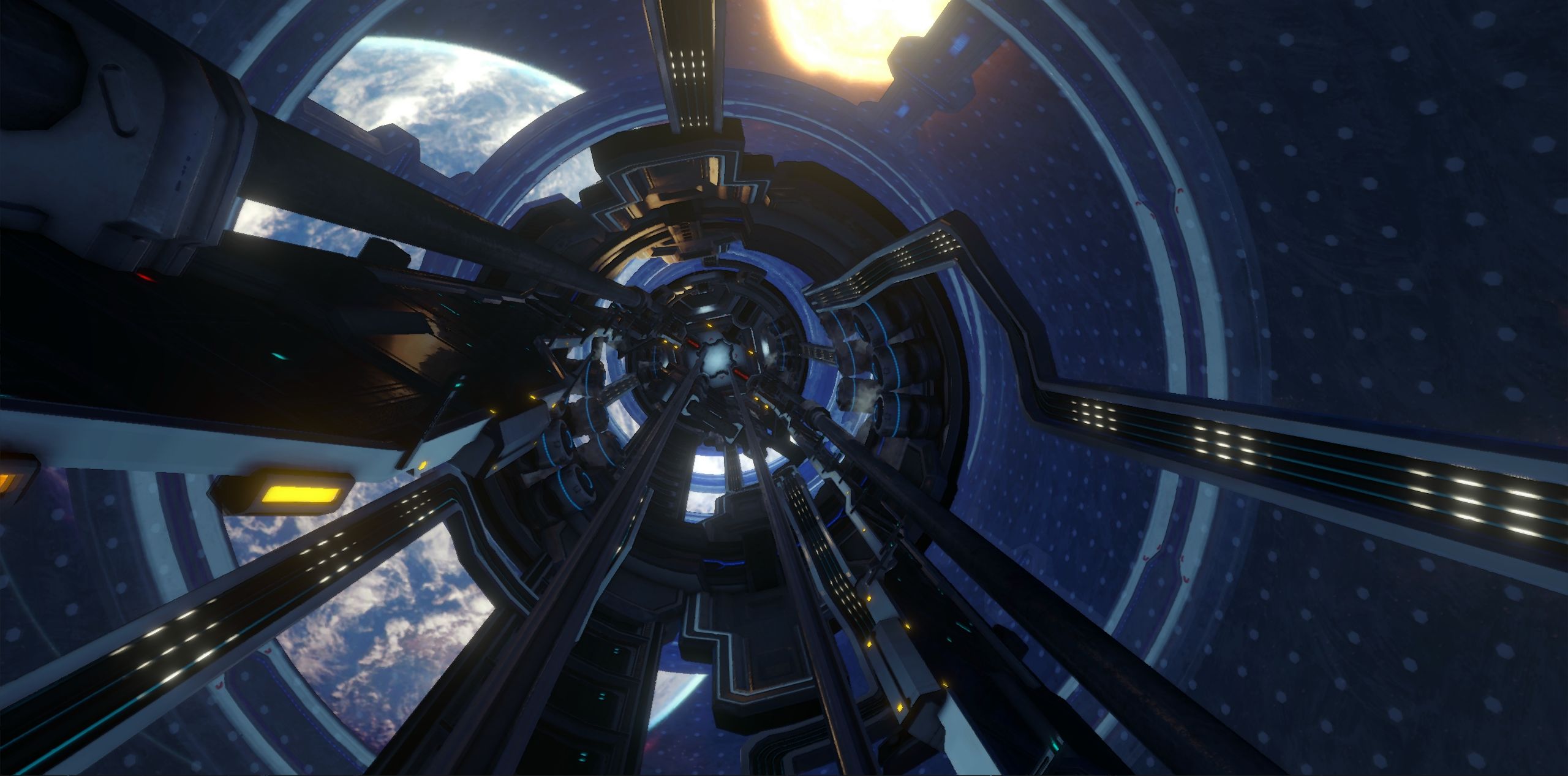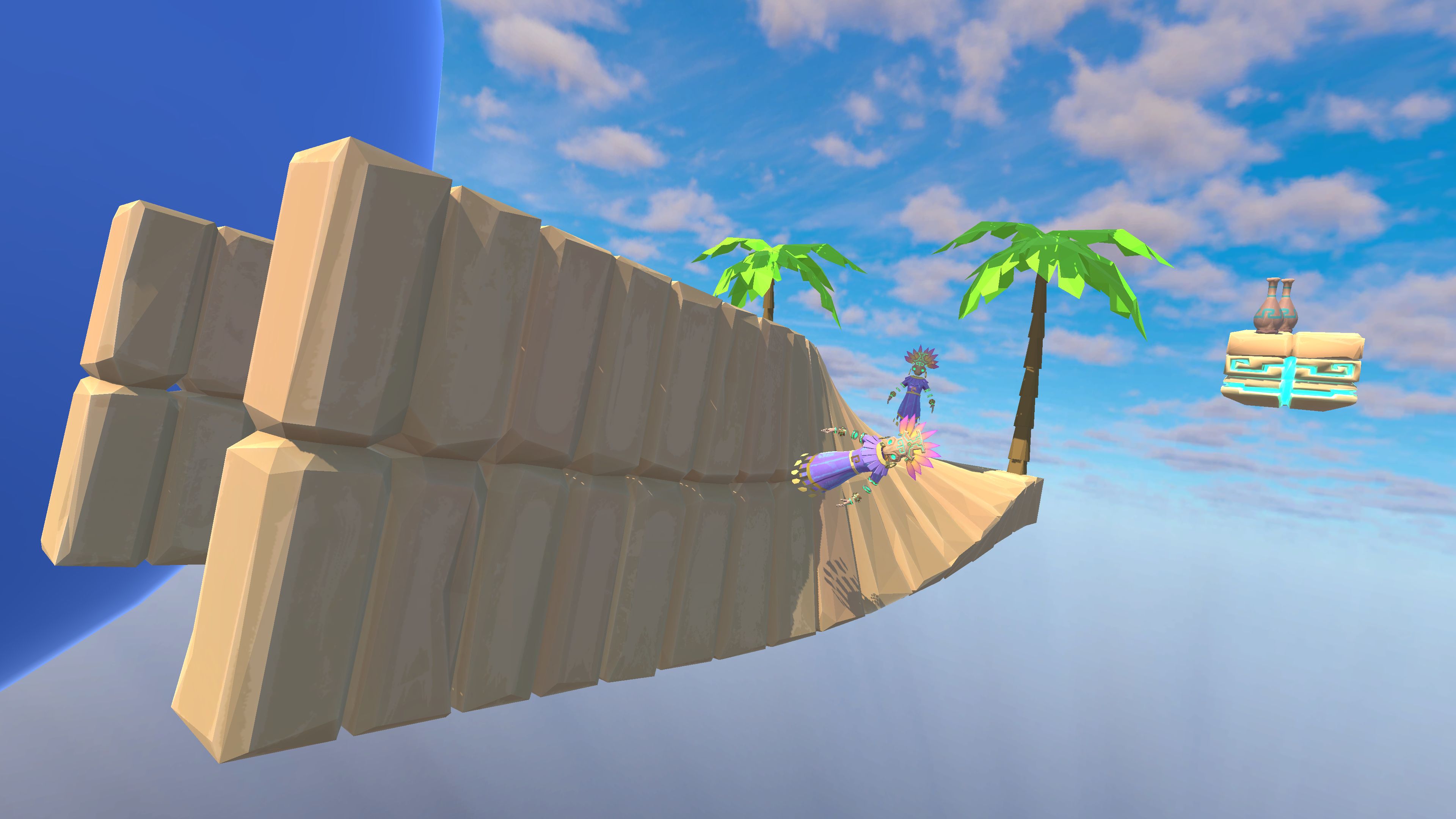Over the past three years, Melbourne, Australia-based startup Zero Latency has been refining its multiplayer virtual reality arcade platform, which currently has three playable games for up to six players with plans to add eight-player support by the end of this year.
The idea came to co-founders Tim Ruse (who’s now the CEO) and Scott Vandonkelaar (CTO) when the two first saw the Oculus Rift while working together at web agency Roadhouse Digital.
“The Rift had just come out and there was also this craze with IRLShooter’s Patient Zero, which combined laser tag with real actors and a zombie storyline, and the idea was to put these two things together and create a new form of entertainment from scratch,” Ruse explained.
The pair left their secure jobs and turned to crowdfunding to kickstart the idea, raising $30,000 on Pozible in July 2014. Ruze said that while this was hard money to raise, crowdfunding allowed the startup to get the message out to VR enthusiasts who were eager to step into virtual worlds and fight cooperatively. This also opened the door for traditional VR investment.
By August 2014 the company had a 2,200 square foot system operating with two players in a completely tetherless freeform multiplayer environment complete with pistols. A year later, the team had upgraded the platform to six players combating virtual reality zombies with assault rifles in the Unity-developed Outbreak game.
Fast forward to today and the company’s development team has created three new games: Survival, a defend-the-fortress style zombie horde experience featuring a squad of heavily armored soldiers, Singularity, which pits a team of space marines against rogue robots on a massive spaceship, and Engineerium, a puzzle-based exploration of a gravity-defying ancient alien world.
Zero Latency has a team of 10 people plus some external contractors working on new titles as well as downloadable content for existing experiences. Vandonkelaar said it takes between seven and nine months to create a game. A new title will be introduced for the platform this August, which will expand the zombie concept to a longer, more exploratory experience.
“We’re a one-stop shop right now,” Vandonkelaar said. “While we’re not game designers ourselves, we’ve tapped into the local game development community. And we’ve spent a lot of time developing and exploring free roam VR. Our goal is to create 15 or 30-minute experiences that people of all skill levels can enjoy and get people through the system in a timely manner.”
By this June, Zero Latency will have 10 sites across the globe and 24 by end of 2017, including U.S. locations in Orlando, Boston, Philadelphia, Wisconsin and the Poconos. The company owns several facilities, including its Melbourne location, and licenses out its platform through partnerships with companies like Main Event Entertainment, which hosts the VR arcade inside its Pointe Orlando arcade and entertainment center.
Hands-on With Zero Latency
I was able to go hands-on with the three current Zero Latency games in Orlando, which operates under the name VPlay Reality. The experience begins with meeting a Game Master, who will first walk you through all of the equipment and then serve as your guide inside of the 4,000 square foot arena. It takes about 8 minutes for the Game Master to walk you through the vest and backpack (which houses an Alienware PC gaming laptop), OSVR HDK2 headset and Razer headphone/microphone before running through the two-handed assault rifle (another 7 minutes).
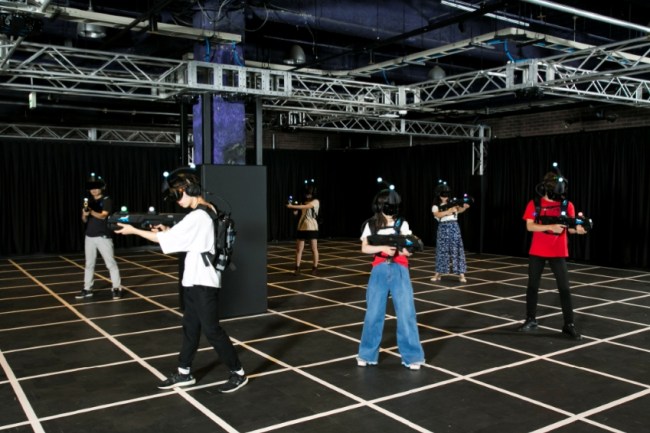 While nowhere near as heavy as a real gun, the assault rifle is a sturdy handful with a button on the bottom for reloading and a button on the side to change the in-game configuration to any of four guns. Two of those guns are automatic, while the other two require individual cocking with every shot. It’s these latter in-game guns (which vary from game to game), that will leave your arm sore the next day because it’s quite a workout when zombies are swarming you or robots and drones are surrounding you in-game. You get more points for killing with the shotgun-style weapons in games than you do for the automatics.
While nowhere near as heavy as a real gun, the assault rifle is a sturdy handful with a button on the bottom for reloading and a button on the side to change the in-game configuration to any of four guns. Two of those guns are automatic, while the other two require individual cocking with every shot. It’s these latter in-game guns (which vary from game to game), that will leave your arm sore the next day because it’s quite a workout when zombies are swarming you or robots and drones are surrounding you in-game. You get more points for killing with the shotgun-style weapons in games than you do for the automatics.
Vandonkelaar said these custom-made guns use a mixture of optical and sensor-based tracking, which allows them to operate independently within any game inside the arena. Patent-pending technology using more than 100 cameras and motion capture devices track each player in real-time as they move.
“You can pass them between players; you can wield two guns in the game,” Vandonkelaar added. “We’ve also used dual pistols before as part of our crowdfunding campaign. But we’re focused on the rifles due to the safety aspect. If you give people pistols they’re more likely to wave guns around and hit another player.”
Part of the pre-brief explains the radar system that pops up in-game when any two (or more) players are close together. It offers a top-down video of the player and shows where the other players are, so it’s easy to move away from them and not bump into anyone in the heat of battle.
Once your team of six is all geared up, it’s time to enter the huge arena – which is essentially a pitch black room that the Game Master guides you into with a flashlight and then spaces you out. It’s inside where you place the rifle on the floor in front of you and pull down the VR headset and headphones. The Game Master turns on the game, which allows you to see and then pick up your rifle. And then you select a circle with your screen name above it for the actual game to load.
After playing a lot of Oculus Touch and HTC Vive games, it is a bit jarring to not see your hands inside of VR. This platform focuses on the gun and allows you to walk and run around, but you don’t have any form of gloves to bring your hands into the experience (at least not yet). And for anyone who plays a lot of home games on those platforms, Unity can only go so far inside of VR, so the graphics of these first-generation games are certainly solid, but they’re not raising the bar.
Vandonkelaar did say their platform will support Unreal Engine 4 and other technology beyond Unity. And Zero Latency is working on an Software Development Kit to allow developers to create original games for this platform.
What really separates this multiplayer Zero Arcade experience from anything at home and from some of the other VR arcades that are popping up around the world is the role of the Game Master. Ruse said the company focuses its hiring for this position by looking at only passionate, heavily tech-skilled people who are friendly and great with customer service.
“Early on we found they’re integral to the experience because people have a one-to-one connection with them and the Game Master brings the group into the experience,” Ruse said. “We want to give them more control, where they can actually control your destiny like in the old Dungeons and Dragons games. They bond with them and they’ll know how skilled a group is and will be able to choose different options to cater the gameplay experience to that particular group.”
Zero Latency is already testing this concept in Melbourne with its frequent players, so it’s only a matter of time before it rolls out to the rest of the world. I saw first-hand where this customization could make the gameplay better. While there were five other players ready to take on zombies with me in Orlando for 15 minutes, only one other player was interested in taking on robots in the longer 30-minute Singularity game.
Before we jumped in, our Game Master warned us that things would get pretty crazy in the game, which was designed for six players. If she could have tweaked things, the gameplay would have been more fun. While I didn’t die once in the zombie game thanks to teamwork and a full squad, I died 19 times and my teammate Enrique died 15 times when we were left to fend for ourselves in a game designed for six players.
All three of these VR games are different, which opens the door for replay. I personally enjoyed killing zombies the most because you just can’t go wrong there. Zombies are just part of the timed onslaught that will come at you in the burned-out city environment at night. You’re given some time between rounds to bolster up your defenses before the monsters tear them down from every angle (including above) to kill you. The action is fast and frenetic and all confined within a fixed area within your fortification. There are a pair of elevators for snipers to take a higher position to eliminate enemies, but I stayed close to the ground throughout the experience (although everyone goes airborne at the end when a military chopper picks up your platform to escape the zombies).
Singularity is the longest (30 minutes instead of 15) and most expensive ($40 instead of $20) of the three games. It’s also likely a game that’s a lot more fun with the full six players engaging the robots, flying drones and AI gone mad. The interesting part of this sci-fi shooter is how easy it is to maneuver throughout a VR world, while also walking in real-life. Through the use of elevators, tight corridors and moving platforms, your mind does believe you’ve traversed a massive spaceship by the end of the boss battle. There’s also a mind-bending zero gravity walk-on-walls sequence as well as a vertigo-inducing battle across a narrow ledge. The game splits the teams in two during the middle portion and then reunites them for the final showdown.
A Puzzler That Isn’t For People Afraid of Heights
Speaking of vertigo, Engineerium, the newest of the games, isn’t for anyone who has problems with heights. Set high above an alien world, the paths and platforms you explore twist and turn in all directions. There are times where you’re upside-down, which takes some getting used to considering you’re walking right-side-up in the real world. It’s truly an otherworldly and mind-tripping experience.
What’s most impressive about this platform is how seamless it is to shoot or explore or do whatever your in-game experience requires. Your mind can completely focus on having fun inside these game worlds without worrying about running into other players. Once Zero Latency ups the ante in the visuals departments with these first-generation games (and maybe adds some type of haptics to the vests – something the company is exploring), I can see this evolving into the type of experience you only once read about in sci-fi novels.
The team is expanding the number of players for future games to eight. Ruse said 16 players can interact inside the arena in Melbourne today, but they’re capping the number of players because of safety concerns and to ensure the games have enough room to maneuver so that it’s fun for everyone.

